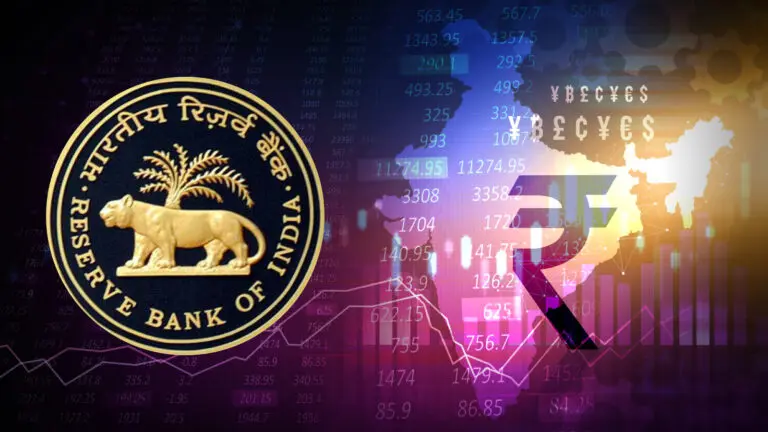
CONTEXT FOR MONETARY POLICY WILL BE RECIPROCAL TARIFFS
Normally, the context for a monetary policy is either inflation, liquidity, or GDP growth. For the upcoming April 2025 monetary policy, the context is likely to be reciprocal tariffs. Trump has just imposed 27% reciprocal tariffs on India. For now, India has decided not to get into a tariff war, but there are going to be long-term implications. For instance, reciprocal tariffs are likely to shave off about 50 bps from global GDP growth in 2025; and more than halve export volume growth to 1.3%. That is clearly going to be the main context for RBI.
The other supporting contexts will be the data flows. Q3 GDP was marginally better than expected, but RBI had cut GDP estimate for FY25 to 6.6%, which should be achieved. However, the 6.7% GDP growth estimate for FY26 may be tough. On the CAD front, Q3 CAD was around 1.2% of GDP, but Q2 CAD has been revised up to 1.8% of GDP. However, like last year, Q4 could see a current account surplus, so, situation will be under control. Inflation has been moving lower, but the IMD has already predicted a major heat wave this year.
RECAP OF KEY ANNOUNCEMENTS OF FEB-25 MONETARY POLICY
Here are some of the key highlights of the February 2025 policy statement.
Let us quickly turn to the key expectations from the April 2025 monetary policy.
There are multiple triggers for the RBI cut rates in April 2025. Inflation is under control, thanks to a sharp fall in food inflation. In fact, February 2025 CPI inflation at 3.61% was below the RBI preferred average of 4%. GDP growth may not have crashed, but it is well below the average of the last 3 years and reciprocal tariffs are a major headwind. At 6.25%, the repo rates are still 110 bps above pre-COVID rates, and despite the sharp fall in 10-year bond yields, the real rates are above 2%. In short, there is a very strong case for the RBI to cut rates by 25 basis points, which looks like a fait accompli. What would be of greater interest for the markets would be the RBI language and the trajectory for rate cuts in future. In fact, markets are expecting an overall rate cut of 100 bps to 5.50% by the end of FY26.
The liquidity deficit of the past has already given way to liquidity surplus. There are other factors that could keep the liquidity situation in surplus in FY26. These factor include sustained OMO purchases by the RBI, Surplus transfer by the RBI to the central government in May 2025, and the surplus in the Balance of Payment due to positive flows. The strategy seems to be that the RBI may allow surplus liquidity in the system to ensure that rate cuts are seamlessly transmitted to the borrowers. The liquidity strategy may focus more on selective tightening of liquidity, but letting it remain in surplus zone.
In the February 2025 policy statement, the RBI had pegged FY26 GDP growth at 6.7% and inflation at 4.2%. As it stands, both could be open to downward revision. If the reciprocal tariffs actually have the impact of depressing global growth, then we could see India’s GDP growth for FY26 slipping closer to 6%. Similarly, for inflation, the more realistic estimate is likely to be sub-4%, assuming the heatwave does not delay the monsoons. However, it looks like the RBI may prefer to wait till the June policy and observe outcomes, before making any change to its GDP growth and inflation estimates for FY26.
About a couple of monetary policies back, the RBI had shifted from a hawkish monetary stance to a neutral stance. However, if the RBI is planning anything like 75-100 bps of rate cut in FY26, then the best starting point would be to shift the stance of the monetary policy from neutral to accommodative. After, all that would be a very subtle way for the RBI to indicate to the market that it is serious about easing rates and liquidity as a counter to the reciprocal tariffs and its deleterious effects.
Effective the April 2025 policy, Dr Poonam Gupta (Director General NCAER) will be part of the MPC in her capacity as deputy governor of the RBI. She will replace Michael Debabrata Patra in the MPC. This promises to be an interesting policy statement and we have to await the final print of the policy on April 09, 2025.
Related Tags

Invest wise with Expert advice
![]() IIFL Customer Care Number
IIFL Customer Care Number
(Gold/NCD/NBFC/Insurance/NPS)
1860-267-3000 / 7039-050-000
![]() IIFL Capital Services Support WhatsApp Number
IIFL Capital Services Support WhatsApp Number
+91 9892691696
IIFL Capital Services Limited - Stock Broker SEBI Regn. No: INZ000164132, PMS SEBI Regn. No: INP000002213,IA SEBI Regn. No: INA000000623, SEBI RA Regn. No: INH000000248
ARN NO : 47791 (AMFI Registered Mutual Fund Distributor)

This Certificate Demonstrates That IIFL As An Organization Has Defined And Put In Place Best-Practice Information Security Processes.